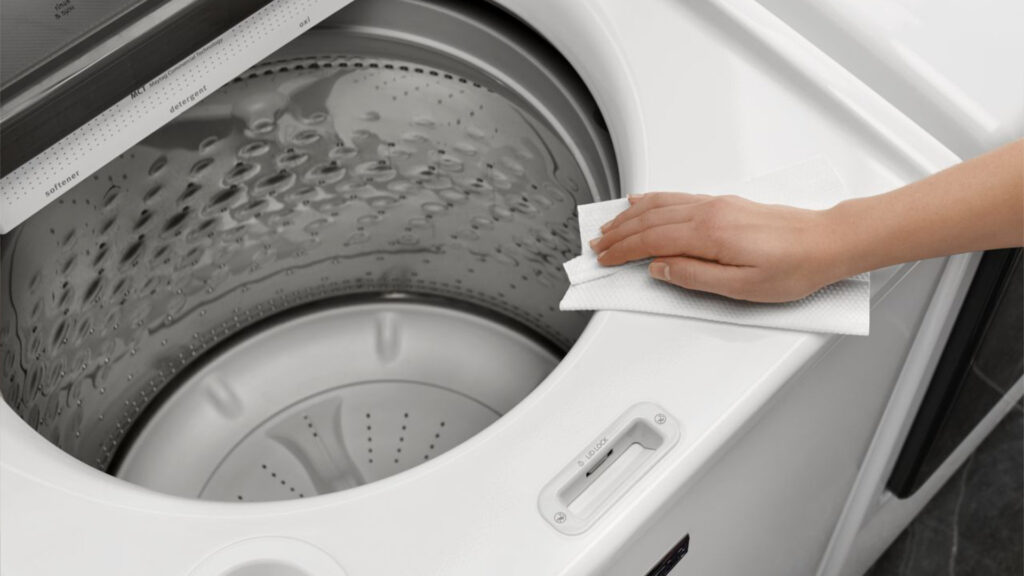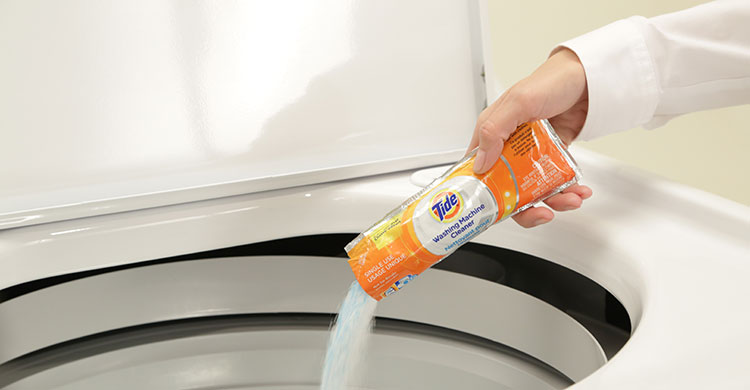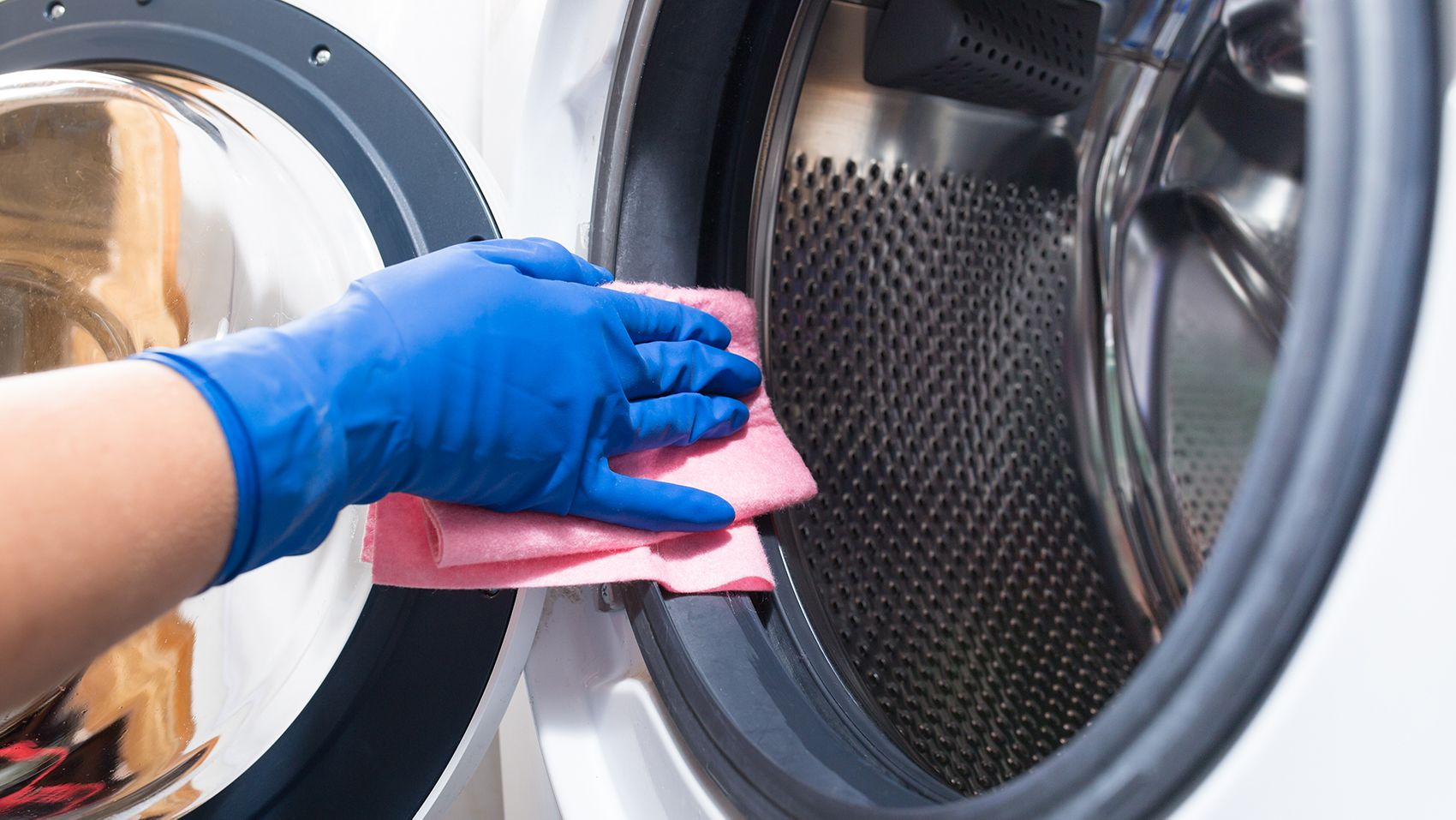Does your washing machine leave your clothes smelly and dirty? Learn simple steps on how to clean the washing machine top loader.

Learn How to Clean the Washing Machine Top Loader
Do you have a top-load washing machine that looks dirty and smells funky? Do you want to make it shine and smell fresh again? If you answered yes to these questions, this article is for you. I will show you how to clean the washing machine top loader easily.
You don’t need any fancy tools or expensive products. All you need are some everyday household items and a little bit of elbow grease. The best part is you’ll be through in no time. By the end of this article, you’ll have a clean and happy washing machine that will make your laundry day fun. So grab your supplies, and let’s get started!
Why Regular Cleaning is Important for Your Top Load Washing Machine
Regularly cleaning your top-load washing machine is essential for several reasons. First and foremost, it helps prevent the growth of mold and mildew, which can cause unpleasant odors and affect the cleanliness of your clothes. Additionally, regular cleaning ensures that your washing machine is operating at peak performance and can extend the appliance’s lifespan.
But did you know that neglecting to clean your washing machine can also negatively affect your health? Bacteria and germs can thrive in a dirty washing machine’s warm, damp environment and transfer onto your clothes, potentially causing skin irritation and other health issues.
1. Preventing Mold and Mildew Growth
One of the main reasons to clean your top-load washing machine is to prevent the growth of mold and mildew. These pesky organisms can quickly take hold in the damp environment of your washing machine. To prevent this, avoid leaving wet laundry in the washing machine for extended periods, and ensure that the machine is properly ventilated. Regular cleaning can also help keep mold and mildew at bay.
It’s important to note that mold and mildew can also accumulate in the detergent dispenser and the rubber seal around the door of your washing machine. These areas should be cleaned regularly with vinegar and water to prevent buildup.
2. Ensuring Optimal Performance
In addition to preventing mold and mildew, regular cleaning of your top-load washing machine can help ensure its operating at optimal performance. Over time, dirt, dust, and detergent buildup can accumulate in the machine’s components, affecting efficiency. Regular cleaning can help remove this buildup and keep your washing machine running smoothly.
It’s also essential to regularly clean the lint filter in your washing machine. A clogged lint filter can cause the machine to work harder than necessary, leading to higher energy bills and potentially damaging the appliance.
3. Extending the Lifespan of Your Appliance

Finally, regular cleaning can help extend the lifespan of your top-load washing machine. By keeping the machine clean and free of debris, you can prevent unnecessary wear and tear on its components, reducing the likelihood of breakdowns and the need for costly repairs.
But even with regular cleaning, it’s essential to watch for signs of wear and tear on your washing machine. Call a professional to assess the situation if you notice strange noises, leaks, or other issues.
Overall, regular cleaning of your top-load washing machine is essential for both its performance and your health. By cleaning your machine regularly, you can ensure that it operates efficiently and lasts for years.
Gathering the Necessary Cleaning Supplies
Before cleaning your top-load washing machine, you must gather some cleaning supplies. The right cleaning products are essential to thoroughly clean and disinfect your washing machine. Here are some of the supplies you can use:
Common Household Items
You may already have some of these cleaning items in your home. They are affordable, easily accessible, and eco-friendly:
- White Vinegar: It’s a natural disinfectant and can help remove mineral buildup and soap scum from your washing machine. Mix half a cup of white vinegar with hot water and run it through a cycle.
- Baking Soda: This versatile powder can help deodorize and clean your washing machine. Mix half a cup of baking soda with hot water and run it through a cycle.
- Lemons: These citrus fruits are a natural deodorizer and can help remove stains and grime from your washing machine. Cut a lemon in half and run it through a cycle.
- Microfiber Cloths: These clothes are perfect for wiping down the exterior of your washing machine and removing any dust or dirt.
Commercial Cleaning Products

If you prefer to use commercial cleaning products, there are several options available that are specifically designed for washing machine cleaning:
- Tide Washing Machine Cleaner: This product is formulated to remove smelly residues and leave your washing machine smelling fresh and clean.
- Affresh Washing Machine Cleaner: This product is designed to penetrate and dissolve mineral buildup and odour-causing residue in your washing machine.
- Clorox Washing Machine Cleaner: This bleach-based cleaner can help remove tough stains and foul smell from your washing machine.
Natural Alternatives
If you prefer natural alternatives, there are several options available that are effective and safe:
- Tea Tree Oil: This essential oil has antibacterial and antifungal properties and can help disinfect your washing machine. Add a few drops to hot water and run it through a cycle.
- Grapefruit Seed Extract: This natural disinfectant can help remove mold and mildew from your washing machine. Mix a few drops with hot water and run it through a cycle.
- Borax: This natural mineral can help remove stains and odors from your washing machine. Mix half a cup of borax with hot water and run it through a cycle.
Using the right cleaning supplies ensures that your washing machine is thoroughly cleaned and disinfected. It will help extend its lifespan and keep your clothes smelling fresh and clean.
Preparing Your Top Load Washing Machine for Cleaning
Before cleaning any appliance, including your top-load washing machine, you must prepare the appliance. It involves emptying the washer, disconnecting the power source, and locating the filter and drain hose.
1. Emptying the Washer
Make sure to empty the washer of any laundry or debris before cleaning. You want to start with a clean slate.
It’s also a good idea to check the pockets of any clothes you’ve recently washed. Sometimes, small items like coins or paper can get stuck in the drum or filter, causing problems down the line.
If you notice any stains or spots on the drum, you can pre-treat them with a laundry stain remover before cleaning.
2. Disconnecting the Power Source
For safety reasons, it is vital to disconnect the power source from your washing machine before beginning the cleaning process. You can do this by unplugging the appliance or turning off the circuit breaker that powers it.
It’s also a good idea to turn off the water supply to your washing machine to prevent accidental leaks or spills while cleaning.
3. Locating the Filter and Drain Hose
Next, you will need to locate the filter and drain hose on your washing machine. These components can vary depending on the make and model of your appliance, so consult your owner’s manual or manufacturer’s website if you need clarification.
The filter is usually located behind a small panel at the bottom of the machine. It’s essential to clean the filter regularly to prevent any blockages or buildup that can cause damage to your machine.
The drain hose is typically located near the bottom at the back of the machine. Make sure the hose is free of any kinks or obstructions before starting the cleaning process.
If you notice mold or mildew on the filter or drain hose, you can use white vinegar and water to clean it. Soak a cloth in the mixture and wipe down the affected areas.
By following these steps, you can ensure that your top-load washing machine is properly prepared for cleaning. Taking the time to empty the washer, disconnect the power source, and locate the filter and drain hose can help prevent any accidents or damage to your appliance.
Cleaning the Interior Components

Now that you have gathered your cleaning supplies and prepared your washing machine, it is time to start cleaning the interior components of the appliance. But before you start, unplug the machine and turn off the water supply.
Keeping your washing machine clean not only improves its performance but also helps to prolong its lifespan. Here are some tips to help you clean the interior components of your washing machine:
1. Washing the Drum
The drum of your washing machine is where all the action happens, so it is critical to keep it clean. Over time, the drum can accumulate dirt, grime, and bacteria, which can cause unpleasant odors and even affect the quality of your laundry.
Fill the drum with hot water and add a cleaning agent, such as vinegar, baking soda, or a commercial cleaner. Let the cleaning solution sit for at least 30 minutes to an hour to allow it to penetrate and dissolve any buildup or debris. Then, run the washing machine on a hot cycle, allowing the cleaning solution to circulate through the drum and remove any remaining residue.
2. Cleaning the Agitator
The agitator is the component that moves your laundry around inside the washing machine. Over time, it can become coated in detergent and fabric softener buildup, which can affect its performance and cause it to wear out faster.
To clean the agitator, remove any removable parts and scrub the component with a cleaning solution, such as a mixture of water and white vinegar or a specialized cleaner. Use a soft-bristled brush to scrub the agitator thoroughly, making sure to get into all the nooks and crannies. Rinse the agitator with water and dry it with a clean cloth before reassembling it.
3. Scrubbing the Lint Filter
The lint filter is designed to catch any lint or debris from your clothes during washing. However, it, too, can become clogged with buildup over time, which can affect the efficiency of your washing machine and even cause it to break down.
Remove the lint filter from your washing machine and scrub it with a cleaning solution, such as soap and water or a specialized cleaner. Use a soft-bristled brush to scrub the filter thoroughly, removing any trapped debris. Rinse the filter with water and let it dry completely before reinserting it into the washing machine.
4. Flushing the Drain Hose
The drain hose of your washing machine is responsible for removing water from the appliance once the cycle is complete. Over time, it can become blocked by debris or buildup, which can cause water to back up and flood your laundry room.
To flush the drain hose, disconnect it from the washing machine and run water through it until it is clear. You can also use a specialized cleaner to dissolve any clogs or buildup. Once you have finished cleaning the drain hose, reattach it to the washing machine and make sure it is securely fastened.
Following these simple steps, you can keep your washing machine running smoothly and efficiently for years. Remember to clean the interior components of your washing machine at least once every six months to ensure optimal performance and longevity.
Final Thoughts: How to Clean the Top Load Washing Machine
I know what you’re thinking: cleaning a washing machine sounds like a nightmare. But trust me, it’s not as bad as it sounds. In fact, it’s pretty satisfying to see your appliance sparkle and your clothes smell like roses.
Following the steps in this guide on cleaning the washing machine top loader, you’ll be a pro and make it last longer. Check out our other helpful cleaning guides to learn more valuable tips. You’ll thank me later.
FAQs: How to Clean the Washing Machine Top Loader
How Do You Remove Buildup From a Top Loader Washing Machine?
Run a hot water cycle with bleach, vinegar, and baking soda to remove buildup from a top loader washing machine. It will sanitize and deodorize the washer.
How to Do a Deep Clean of Your Washing Machine?
To do a deep cleaning of your washing machine, remove the agitator and soak it in bleached water, then scrub it with a brush. Clean the drum with a washing machine cleaner tablet or bleach.
How Do I Clean a Smelly Washing Machine?
To clean a smelly washing machine, use vinegar and baking soda to eliminate odors and bacteria. Leave the lid open after each wash to let it air out.
How to Clean a Top-Loading Washing Machine With Baking Soda and Vinegar?
Add 2 tablespoons of baking soda to the detergent drawer and 1/2 cup of vinegar to the drum. Run a hot water cycle.
How Often Should I Clean My Washing Machine?
The frequency of cleaning your washing machine depends on how often you use it and the type of washer you have. Generally, you should clean it about once a month or every 30 cycles. If you have hard water, pets or kids, or live in a humid area, you may need to clean it more often.


